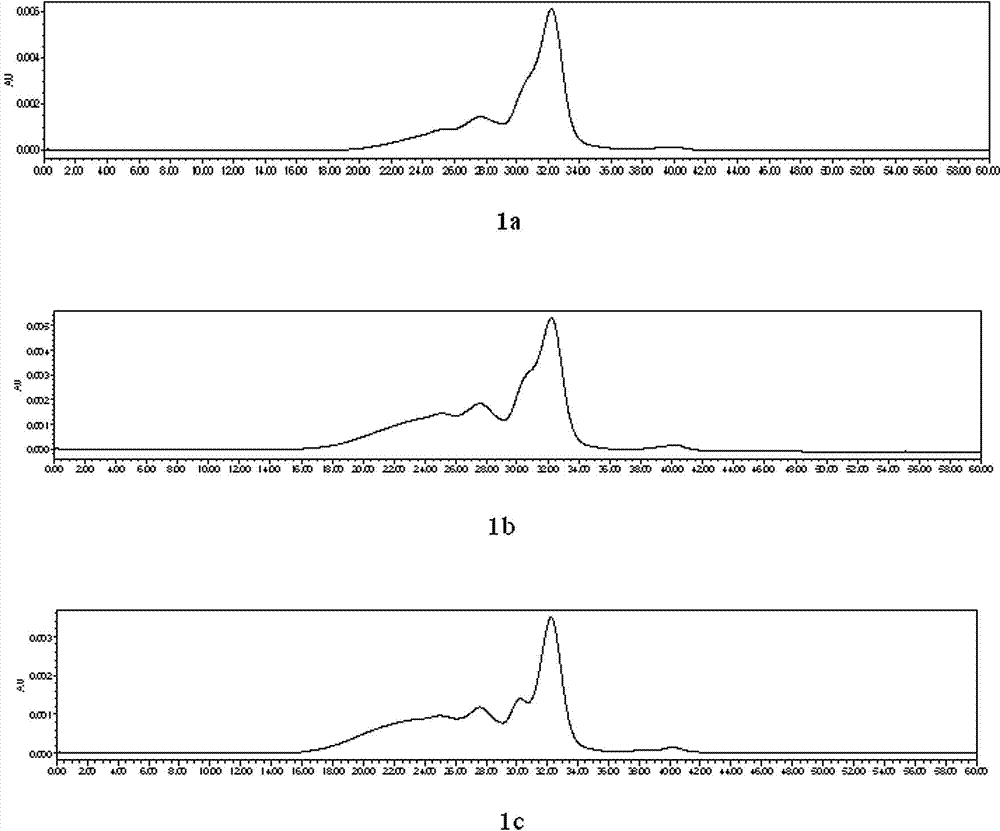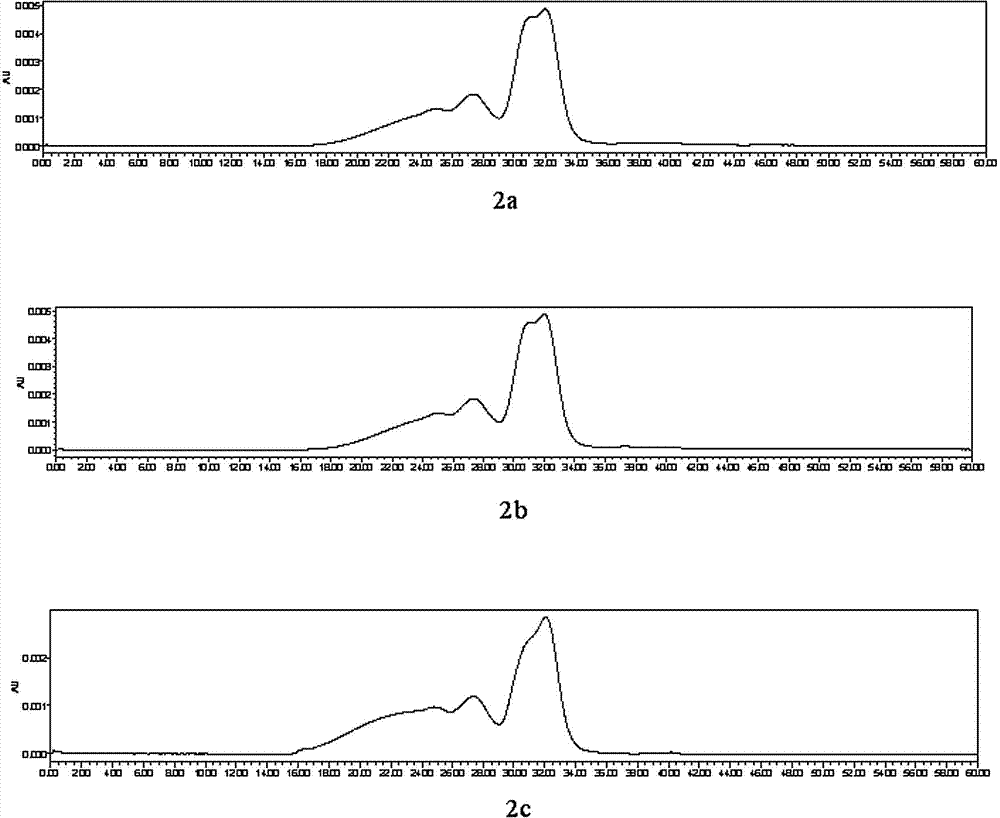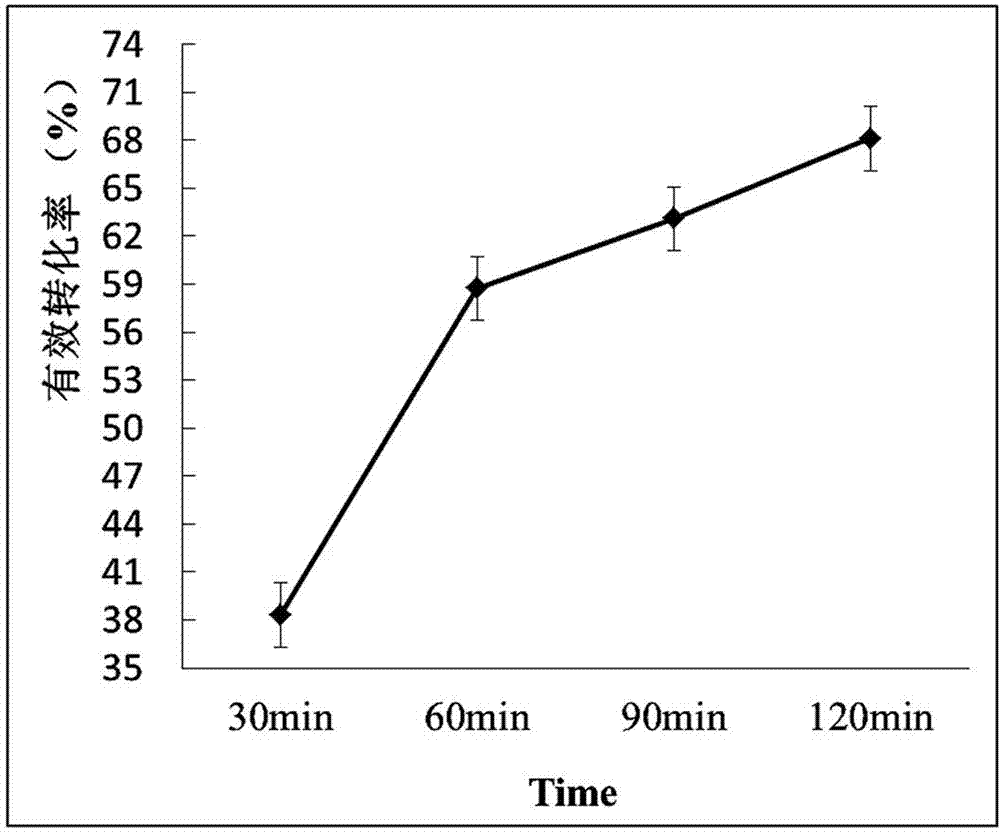Improved polymerized hemoglobin preparation method
A technology of hemoglobin and deoxyhemoglobin, which is applied in the direction of hemoglobin/myoglobin, chemical instruments and methods, specific peptides, etc., can solve the problems of high cost, cumbersome steps, and long preparation cycle, and achieve long solution cycle and high effective conversion rate Effect
- Summary
- Abstract
- Description
- Claims
- Application Information
AI Technical Summary
Problems solved by technology
Method used
Image
Examples
Embodiment 1
[0027] Measure 100ml of stromal-free human placental hemoglobin liquid with a free concentration of 5.5% at 4°C (prepared in normal saline, the same below), and add it to 150ml of N2-filled 2 Put the suction filter bottle in the ice bath, pass nitrogen for about 30 minutes, so that the hemoglobin is in a deoxygenated state; put the suction filter bottle with hemoglobin on the magnetic stirrer, the stirring speed is 750rpm, continue to pass nitrogen for 20 minutes -25min, add glutaraldehyde by adding sample through titanium rod, so that the molar ratio of glutaraldehyde to hemoglobin is 5.5 : 1, 30min sampling, and add a certain amount of NaBH 4 The solution, after no air bubbles are generated, is sealed and placed in a refrigerator at 4°C for detection. The result is as figure 1 as shown in a.
[0028] figure 1 It is the HPLC schematic diagram of the influence of different concentration hemoglobin solution raw materials on the preparation method of the present inventio...
Embodiment 2
[0032] Measure 100ml of stromal-free human placental hemoglobin liquid with a free concentration of 6.0% at 4°C, and add it to 150ml of N2-filled 2 Place the suction filter bottle in an ice bath, pass nitrogen for about 30 minutes, so that the hemoglobin is in a deoxygenated state; place the suction filter bottle containing hemoglobin above a magnetic stirrer, stir at 600 rpm, and continue to pass nitrogen for 20-25 minutes, Add glutaraldehyde by feeding through a titanium rod so that the molar ratio of glutaraldehyde to hemoglobin is 6.5 : 1. Take a sample at 90 minutes and add a certain amount of NaBH 4 The solution, after no air bubbles are generated, is sealed and placed in a refrigerator at 4°C for detection. see results figure 2 as shown in c.
[0033] figure 2 It is an HPLC schematic diagram of the influence of different cross-linking agents and hemoglobin molar ratios on the preparation method of the present invention. Wherein, 2a is the HPLC figure of lower mol...
Embodiment 3
[0035] Take 100ml of stroma-free human placental hemoglobin solution with a free concentration of 6.0% at 4°C, and add it to 150ml of N2-filled 2 Place the hemoglobin in a suction filter bottle at 6°C for about 30 minutes to keep the hemoglobin in a deoxygenated state; put the suction filter bottle with hemoglobin on top of a magnetic stirrer at a stirring speed of 500 rpm, and continue to pass nitrogen for 20- 25min, add glutaraldehyde by adding sample through titanium rod, so that the molar ratio of glutaraldehyde to hemoglobin is 6.0 : 1. Take a sample at 60 minutes and add a certain amount of NaBH 4 The solution, after no air bubbles are generated, is sealed and placed in a refrigerator at 4°C for detection. The result is the same as figure 2 Consistent with that shown in b.
PUM
 Login to View More
Login to View More Abstract
Description
Claims
Application Information
 Login to View More
Login to View More - R&D
- Intellectual Property
- Life Sciences
- Materials
- Tech Scout
- Unparalleled Data Quality
- Higher Quality Content
- 60% Fewer Hallucinations
Browse by: Latest US Patents, China's latest patents, Technical Efficacy Thesaurus, Application Domain, Technology Topic, Popular Technical Reports.
© 2025 PatSnap. All rights reserved.Legal|Privacy policy|Modern Slavery Act Transparency Statement|Sitemap|About US| Contact US: help@patsnap.com



